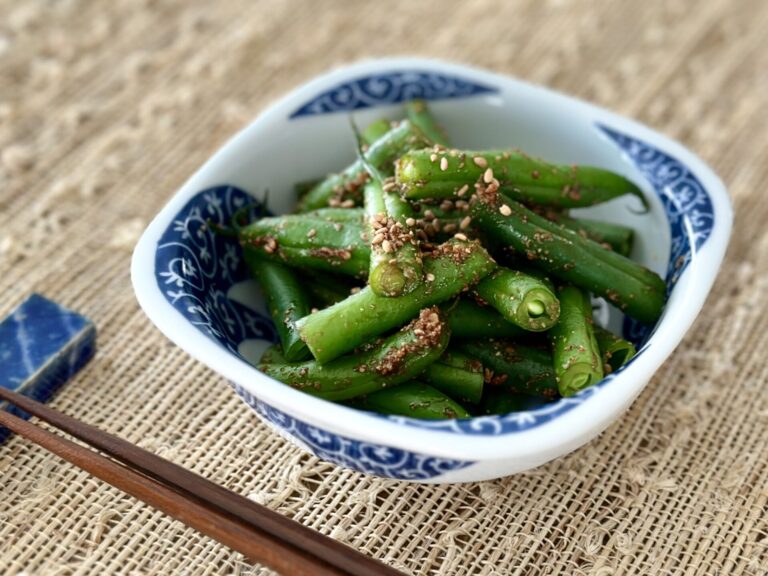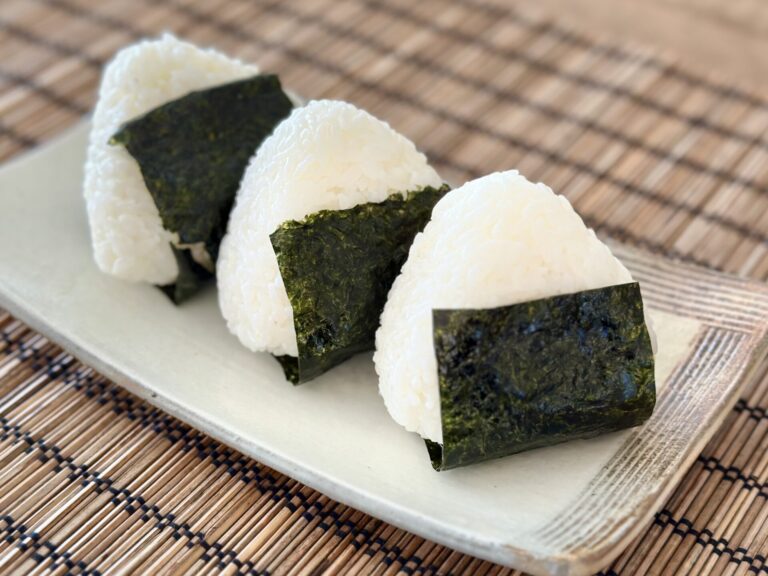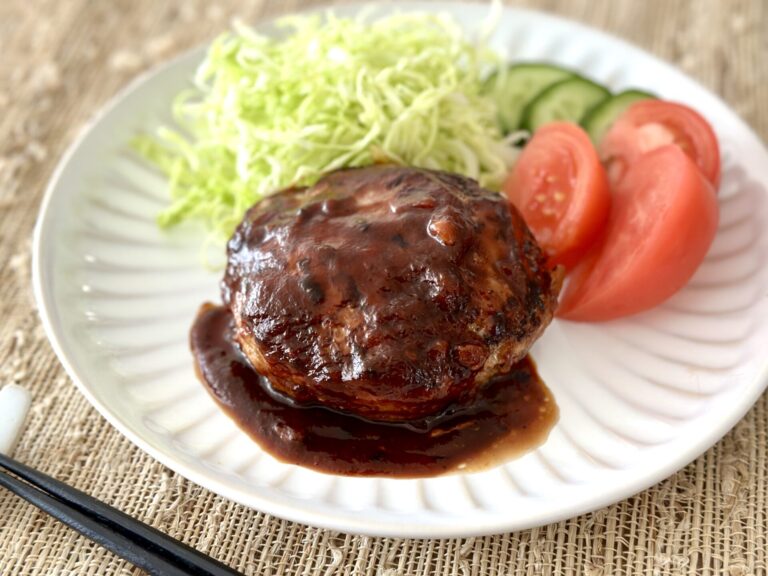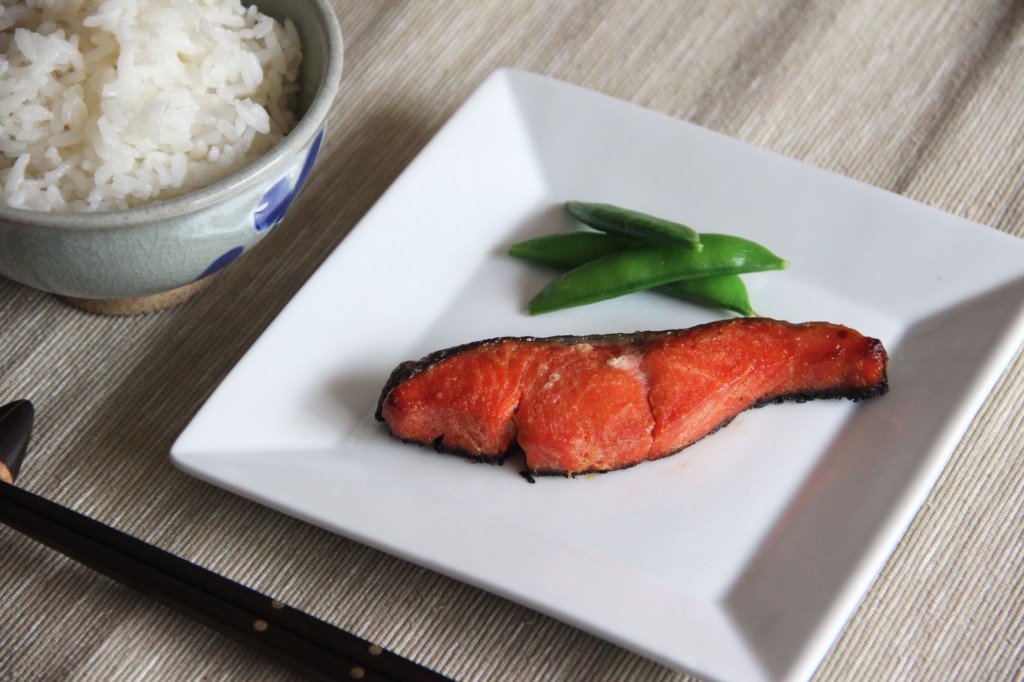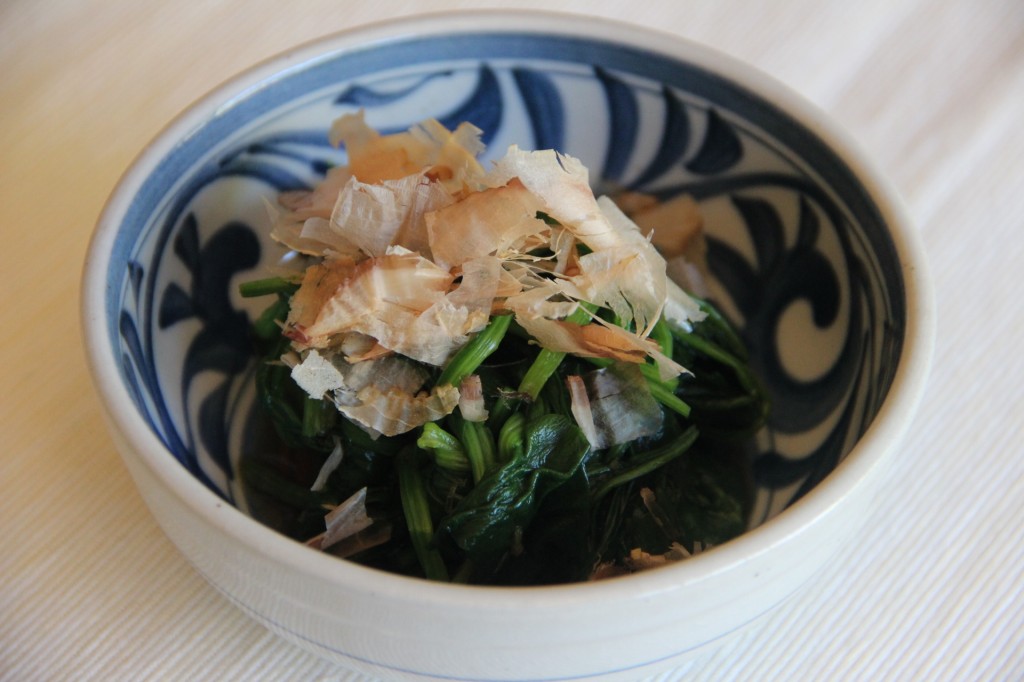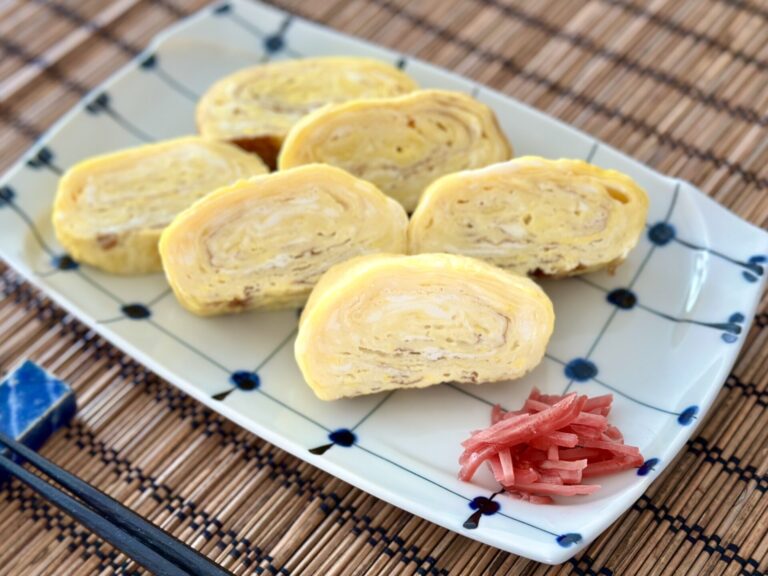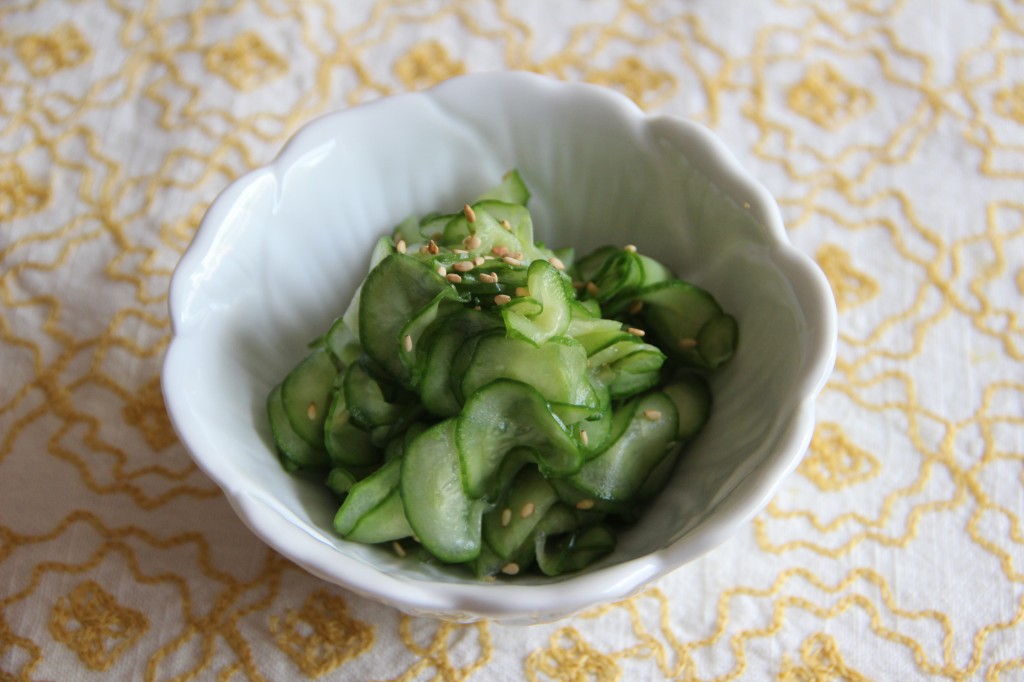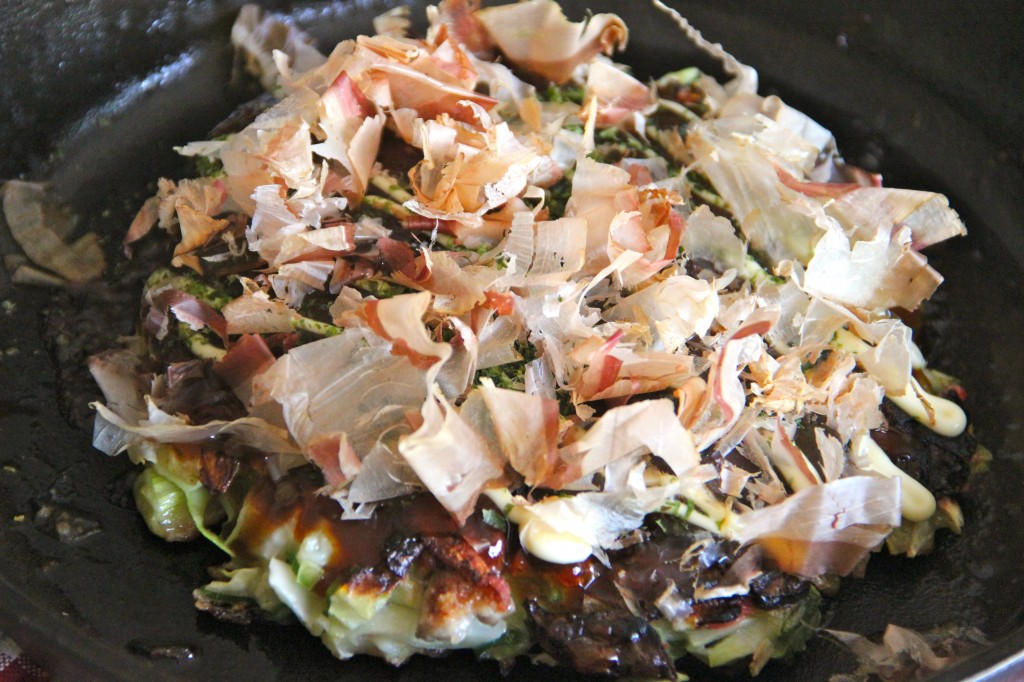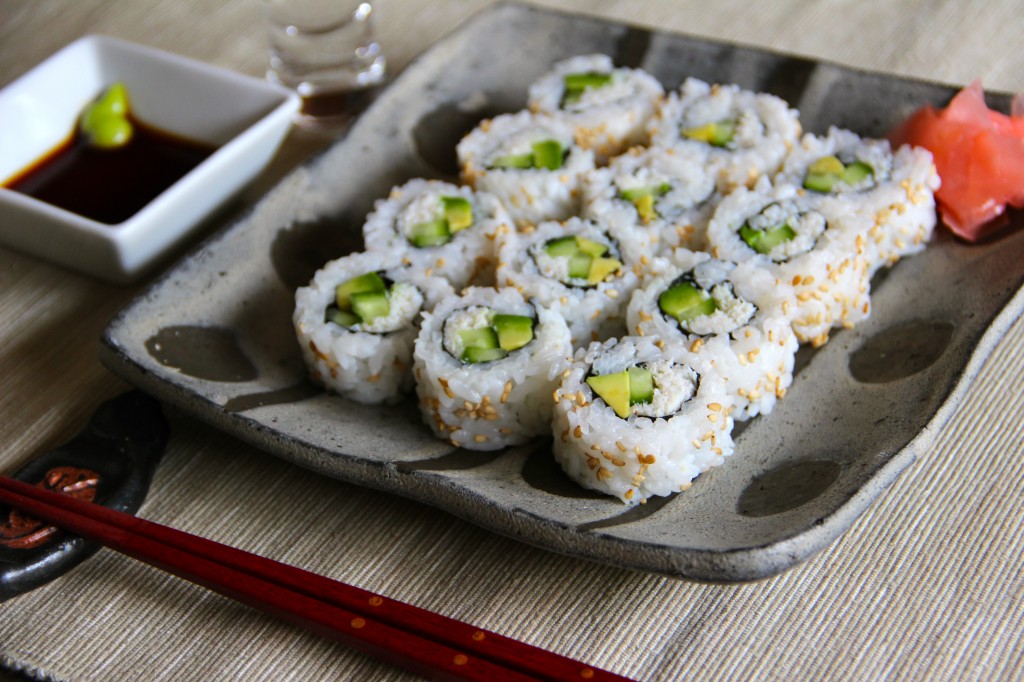Green Beans with Sesame Sauce (いんげんの胡麻和え) make a delightful side dish when you need a little something extra for a meal. It’s extremely quick and easy to make, yet bursting with the rich flavor of sesame seeds and packed with nutrition.
Onigiri (おにぎり), often called rice ball in English, is steamed rice that is formed into different for shapes with various fillings and wrapped with Nori roasted seaweed. It’s a quick light meal or satisfying snack you can make yourself or buy at many stores in Japan.
Japanese Hamburger Steak, called Hambāgu (ハンバーグ), is not exactly traditional Japanese food but rather a Western-style dish, similar to Tonkatsu. It is an extremely popular home-cooked meal and a staple dinner dish in many households. The pan-fried, tender steak served with a rich brown sauce is loved by Japanese people of all ages, especially young children.
You might not have had Miso marinaded Salmon before. Yes, we use Miso paste for something other than Miso soup. Ordinary Japanese restaurants in the US don’t often seem to have this kind of dish on the menu. But it is quite popular dish in Japan because it’s tasty and very simple to make.
When fish or meat is marinaded in Miso paste, Miso gives it flavor, and also makes it tender. A famous kind of grilled fish marinaded in Miso is Saikyoyaki. Saikyoyaki uses Saikyo Miso, a kind of white Miso made in Kyoto. Saikyo Miso has a very nice, sophisticated sweetness that is perfect for a marinade. However, it is hard to get Saikyo Miso in the US, so we substituted with white Miso which is easily found at many American supermarkets.
Spinach is such a super nutritious vegetable, you want to eat it as often as you can. Spinach Ohitashi, cooked spinach salad, is a very popular, healthy, and of course tasty small side dish in Japan.
Nimono is usually seasoned with combinations of soy sauce, sugar, Sake or Mirin that give vegetables sweet and salty flavors. The seasoned broth in Nimono is not soup to drink, but only to give vegetables flavoring. It gives mild flavorings to vegetables and enhances the taste of the vegetables.
Japanese pumpkin, Kabocha, is very dense and sweet, different from pumpkin in the US. In Japan, Kabocha is in season in winter, and this dish reminds me of winter time there. When Kabocha is cooked, the inside becomes bright orange. Kabocha’s thick and dense texture is closer to sweet potatoes than squash. Kabocha no Nimono usually has a sweeter broth than some other kinds of Nimono. But you can change to your liking.
Kabocha is very hard to cut when it’s raw, so please be careful. First stab it with knife, then cut down. Trim the sharp edges of the rind from the cut pieces of Kabocha. That’s supposed to help Kabocha from dissolving, according to my mother.
If you like yam on Thanksgiving, you’d like this dish, just not as sweet. It could be a side dish to an American main dish such as roast chicken or meatloaf. Or with any kind of Japanese main dish, of course.
Kabocha is available at many supermarkets in the US.
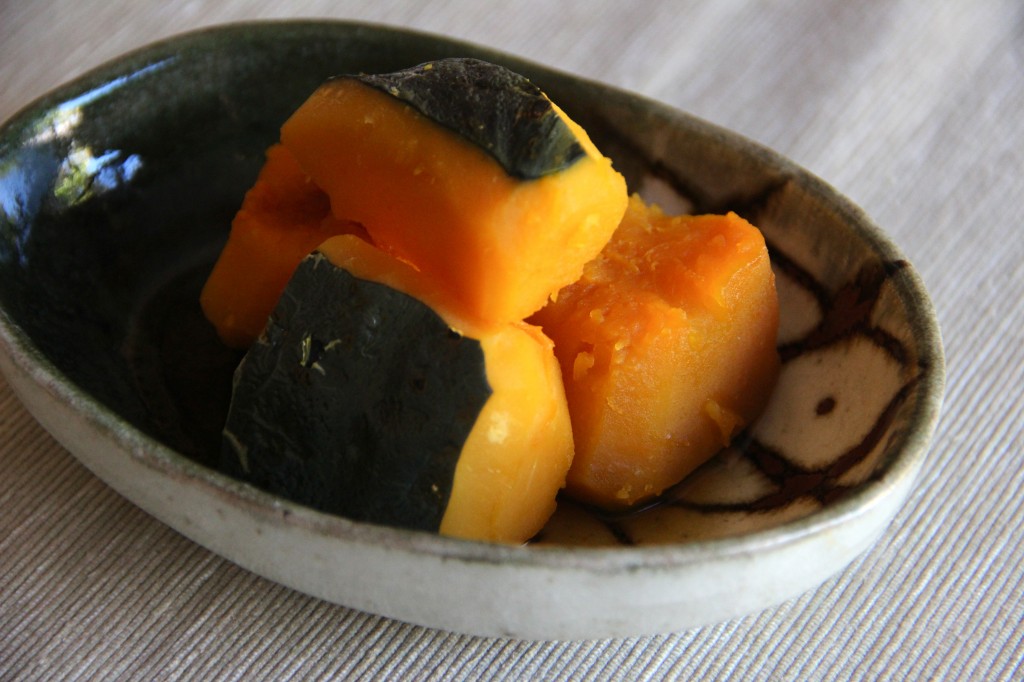
Kabocha no Nimono (Simmered Pumpkin) Recipe
Instructions
- Remove seeds and cut Kabocha into 3″ square pieces. Cut off sharp edges of the Kabocha pieces.
- Boil Dashi in a pot and put Kabocha in it. Cook Kabocha covered until tender at medium heat, about 20-30 minutes depending on how hard your Kabocha is.
- Add sugar, soy sauce, salt and Sake to the Kabocha. Reduce heat to medium low, and cook another 15 -20 minutes to reduce the broth a little.
- Remove from heat and let it sit covered until cool. As it cools, Kabocha will absorb more of the flavor from the broth. If you like it warm, reheat before serving.
Video
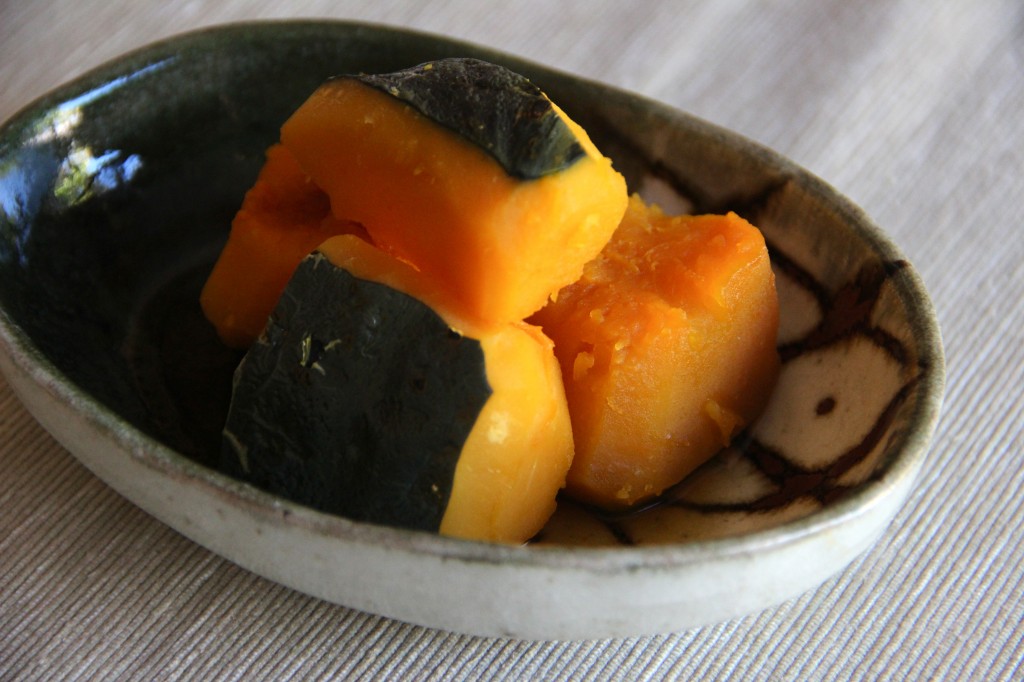
Tamagoyaki (玉子焼き) is made by pan-frying thin layers of eggs and rolling them into a log, often using a special rectangular tamagoyaki pan. In Japan, it is enjoyed at any time of the day—from breakfast to bento lunches, or as a nice side dish for dinner. Tamagoyaki is a simple dish made with basic ingredients, but it plays a significant role in Japanese cuisine and is frequently seen in meals.
Sunomono (Cucumber Salad) is a perfect small side dish. It’s easy to make, healthy to eat, and very refreshing to accompany any main dish. It’s tangy but sweet, who wouldn’t like it?
Japanese cucumbers are much skinnier than American ones. They have much less seeds (or at least much smaller seeds) and thinner skin. You might be able to find Japanese cucumbers at some markets in the US. However, if they are not available, you can use English or Persian cucumbers as substitutes. Especially Persian cucumbers are very similar to Japanese ones. Persian cucumbers are a bit shorter, but it doesn’t matter. Just use one more.
Okonomiyaki is a cabbage pancake covered with Okonomiyaki sauce. Okonomiyaki sauce is a Worcester-based sauce with some sweetener, and it is the crucial flavor of this dish. We like Otafuku brand, but anything you can find is fine. Or you can use Tonkatsu sauce that tastes similar but less sweet.
You hear people say, “I can’t eat sushi (raw fish), but I eat California roll.” California roll is so popular that even people who don’t want to try exotic ethnic food will eat it. It is made of pretty innocuous ingredients for sushi: rice, roasted seaweed (sushi nori), cucumber, avocado, and crab meat. No raw fish, and even the seaweed is hidden inside the roll.
